
The Titans offense flows through the run and the power of Derrick Henry. Tennessee ranked 3rd in the league with 2,223 yards on the ground with five yards an attempt. Throw in Ryan Tannehill’s resurgence and you’ve got a recipe for success. Tannehill has been exceptional on play-action with a 78.4% completion percentage, 1,095 yards, eight touchdowns, and a 143.5 quarterback rating. Combine the power of the run and the play of Tannehill and the Titans have the ability to beat anyone when they’re rolling.
The Derrick Henry and the Titans run game lives from under-center. Despite Henry’s size, he’s not a traditional power between-the-tackles type of runner. He has surprising quickness and has a knack for getting small and squeezing through tight running lanes in the defense. He combines quickness and power like no other running back in the league and if you give him a hole he won’t just take it, but he’ll run over the first person that tries to tackle him too. That’s the biggest difference and area concern if Henry is hurt or can’t get going. What is a 3-4 yard gain for Henry is run the exact same way through the exact same opening and is only 1-2 yards for their backup Dion Lewis.
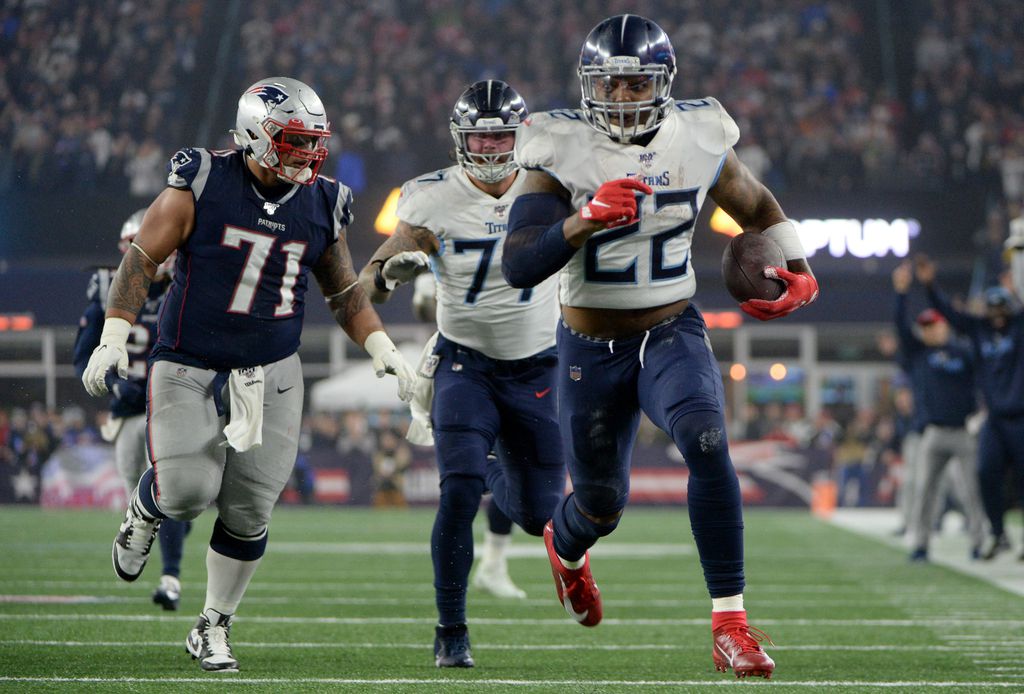
The good news for the Titans? There’s no evidence that you need to run the ball well or even often to be able to set up play-action. “We have an ever-growing body of evidence that teams don’t need to run often — or run well — to set up play-action. Play-action works for teams that run frequently, infrequently, well, or poorly. For the vast majority of teams, it just works. From 2011 to 2017, 196 of 224 team-seasons had higher yards per play on play-action dropbacks than on non-play-action dropbacks. This includes teams like the 2017 Lions (9.4 yards per play-action play, No. 30 in rushing DVOA) and 2015 Jaguars (1.7 more yards per play on play-action dropbacks despite being No. 28 in rushing DVOA and only running 31 percent of the time)” (Baldwin, 2020). So let’s jump right in and figure out what the Titans do well, their base plays, counters, and for you fantasy gurus – whether Tannehill is worth picking up in dynasty or if he’s put himself in the conversation to be one of the top quarterbacks taken off the board.
Since the stem of the Titans success comes from Derrick Henry, let’s start with their run game. The Titans run predominantly from under center. In fact, 81% of Derrick Henry’s runs came when Tannehill was under center as opposed to in shotgun. This helps with two things: one, it helps Henry get downhill faster to use his size and explosion, and two, it is way more effective for play-action. The Titans love to run stretch and outside zone schemes with Henry. While Henry is large, he has a ton of speed once he turns it on and runs with exceptional power. As soon as he puts his foot in the ground to get up-field, linebackers are in trouble. Here’s a few examples of the Titans outside zone. A lot of times they’ll run it out of 12 or 21 personnel and give Henry a lead block on top of everything. It makes it super hard to square Henry up and get a direct blow on him and he does a great job of sliding off contact.
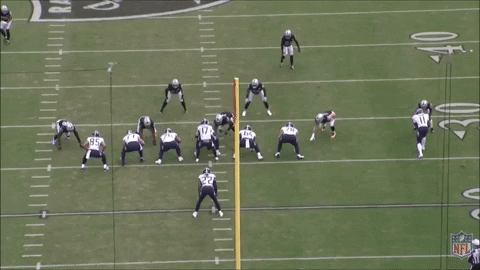
Here’s another outside zone by Henry where he reads his blocks perfectly and is physical throughout the run, getting vertical as soon as possible and rolling off contact.
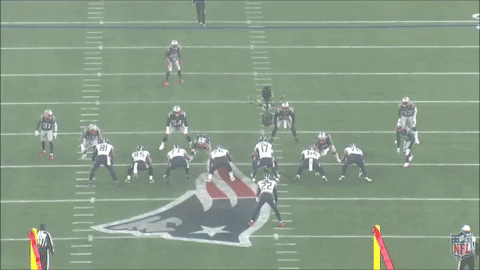
The Titans love getting Henry going downhill. As a change of pace they’ll do a quick pitch with the same outside zone scheme and get him even more depth and ability to work up to speed. He does a great job pushing hard to the play and setting up his blockers with advantageous angles to block and seal off linebackers in the gif below. You can notice here how both the linebackers flow hard to the right before Henry quickly takes the cutback to the middle of the field.
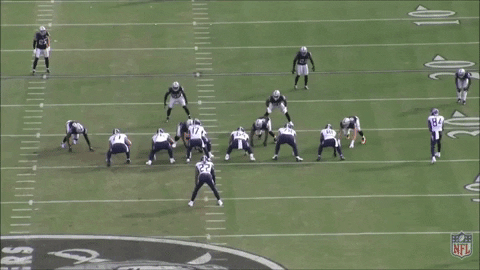
Here’s another example of Henry on the outside zone, this time with a fullback lead. Henry does a great job of setting up his block and forcing the linebacker into his fullback by stemming inside and creating a better angle before cutting off of him and getting vertical. These outside zone and fullback leads are a staple of the Titans offense and make it impossible for linebackers not to sell out on the run.
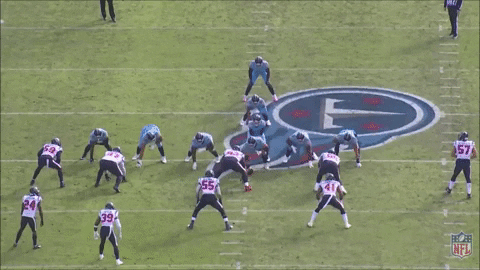
You can even see how Henry impacts the play here when he doesn’t get the ball. The jet sweep is handed off going to the left but the run action from Henry pulls #21 and #59 completely out of the play.
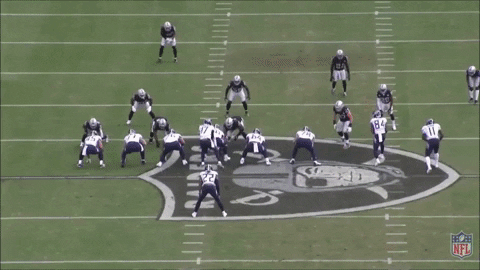
Now that we’ve established the base plays for the Titans run game, we’ll dive into how they work play-action off of it. Of Tannehill’s 286 passing attempts, 29.3% were play-action. Those 29.3% of his passes are accounting for 49.2% of his yards and 34% of his touchdowns. To me, that says run play-action even more. With the stats mentioned at the top, you don’t have to run the ball well or frequently to have effective play-action passes. That being said, it certainly helps when you have to bring in bigger linebackers and stay out of nickel or dime personnel because you’re worried about Henry running down your throat. Here’s a play-action pass where they now leak that lead fullback up the sideline for a big play.
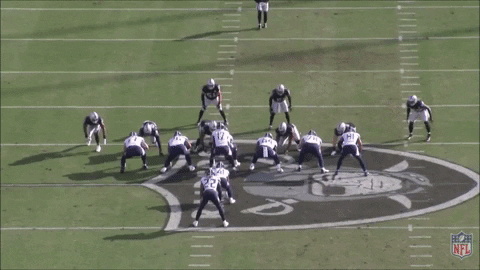
In the Titans offense, the threat of the run is always there and it puts defensive coordinators in a bind as far as personnel and it makes linebackers hesitate. Play-action even works when Dion Lewis is the starting running back. While a serviceable running back in the passing game and on third downs, Lewis is not an every down back. Yet linebackers from the Saints still crash down on the run and open up huge holes in the secondary. If you’re playing zone against the Titans play-action game, good luck because Tannehill is great at hitting those intermediate digs in the middle of the field.
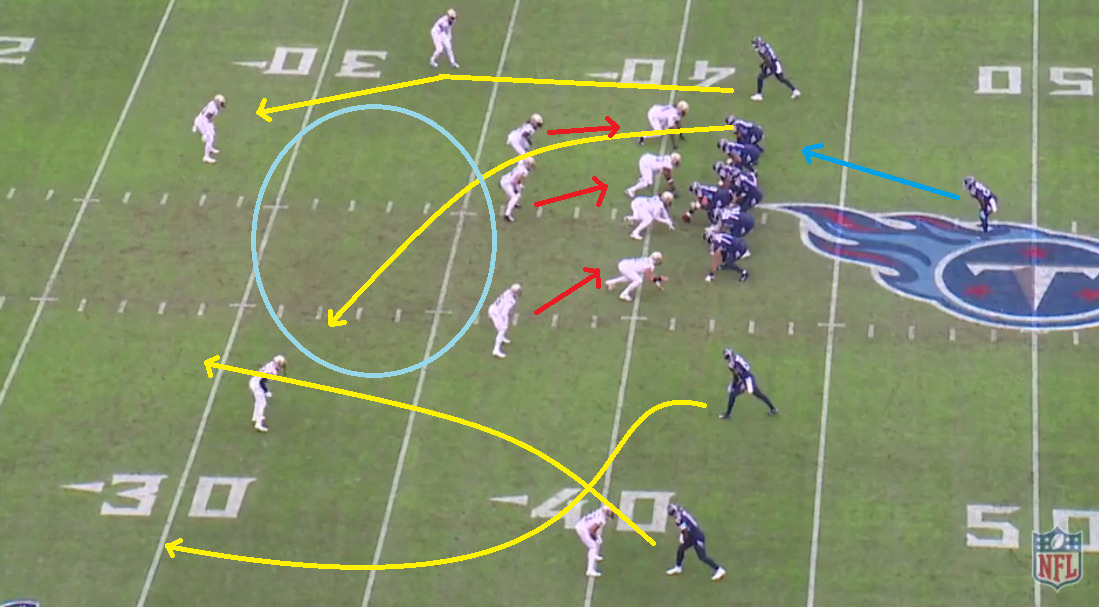
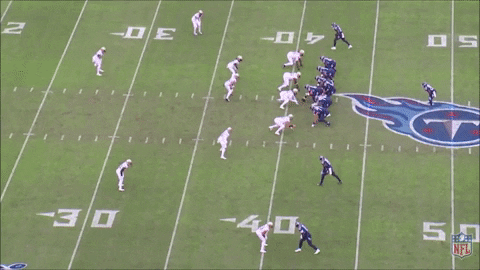
They’ll hit these vacated gaps over and over again in the middle of the field to take advantage of flowing linebackers that are attacking the run.

You might notice on the last gif though, that that’s a two man route. Only two receivers are releasing on that play and some of the route design on these two-man play-actions gives me some concern. I’m all for taking a shot and pushing the ball downfield, but more than a few times the Titans have dialed up two deep routes from their receivers which really doesn’t take advantage of play-action on the linebackers. Instead you’re hoping that a DB is caught flat footed or a safety comes down on the run. This can happen, but disciplined defenses don’t do it and it’s ended up as a wasted play or a sack a number of times. Here’s one in their first matchup against the Texans. All they do is scissor the two receivers down the left side of the field and nobody is over the middle to make the linebackers pay for coming up on the run.

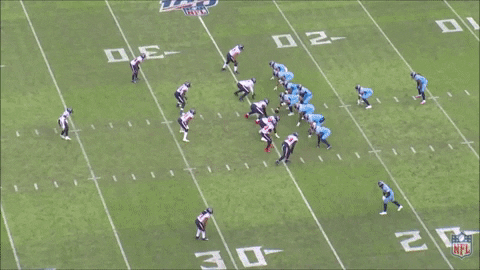
Here against the Patriots, they run two receivers deep again while chipping their tight ends before leaking them into the flats. The Patriots show a cover 4 look. So pre-snap all four defensive backs are deep indicating that they are covering the four deep quadrants of the field. Instead of dropping to cover 4, they rotate to cover 3 robber post-snap and the safety to the bottom of the field rotates down and “robs” the middle of the field for any crossing routes – which they know the Titans love to run. This robber look is one of the better ways to combat play-action with active linebackers. The linebackers may get out of position because of the run, but because the safety is coming down, it can close the window for the digs across the middle and bait Tannehill into a poor decision. The Patriots carry the two deep routes and Tannehill has to check it down to the flats.
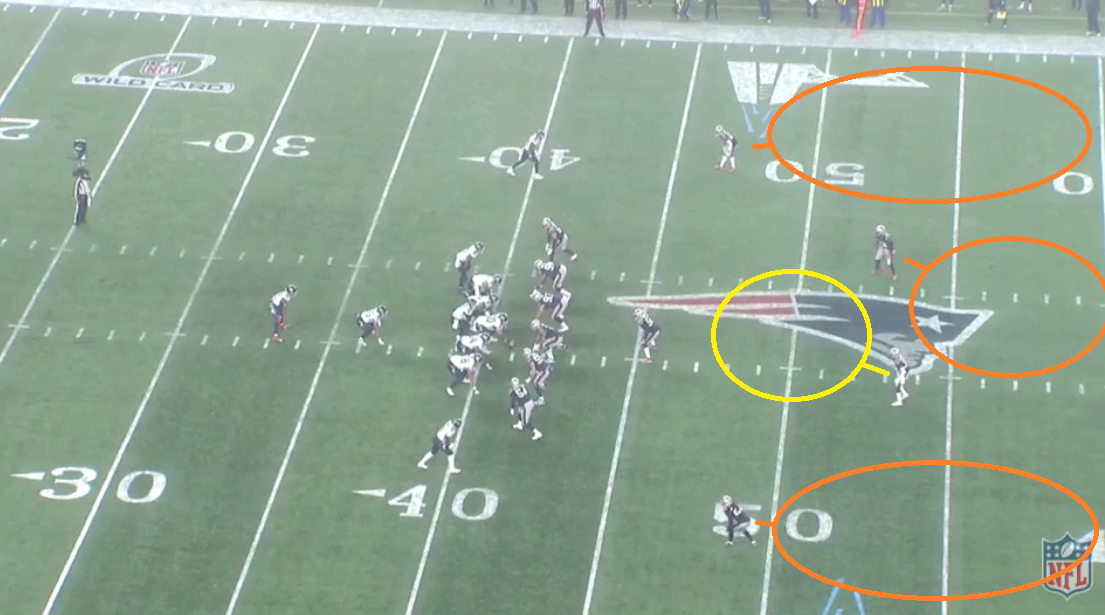
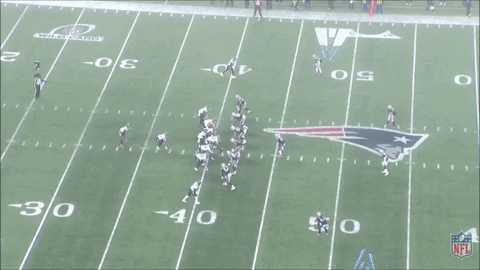
So what does this mean for Tannehill’s long-term prospects in the offense and can he carry the load if Henry goes down or the running game isn’t killing it? Tannehill, while having played exceptionally well with an 80.9% on target throw rating according to PFF (for comparison, Brees had a 84.1% accurate throw rate and Mahomes had a 77.2% this year), is prone to hold onto the ball and take unnecessary sacks at times. As a potential or current fantasy owner, though, this isn’t a huge issue. He’s been relatively safe with the ball and hasn’t made any huge interceptions – save maybe the one in the playoffs against the Patriots where he had pressure in his face. Let’s take a look at a couple of the reads and throws Tannehill has made over the last few games.
We’ll start off with an absolute laser by Tannehill. One of my favorite throws of the year. He puts the ball on a line 35 yards downfield right over the shoulder of a trailing man defender. Tannehill absolutely has the arm to be a top tier guy. He can routinely make deep out throws to the boundary look effortless and can make any throw you want him to. A lot of the play-action and drop-back passing game has been simplified for him and it seems to have helped a lot. It helps him think faster and has enabled him to make some really impressive throws.
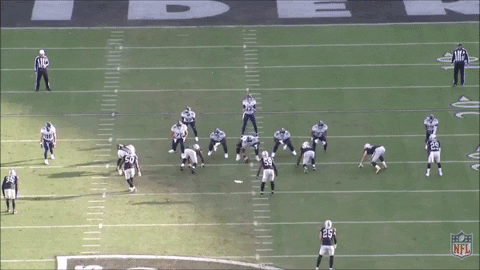
While he does have the arm to make every throw, he also can often end up taking a harder throw over an easier one, likely off of deciding on a matchup he loves pre-snap. Here you can see the dig route coming open with no linebackers to cap and prevent the throw in the middle of the field. The safety is lurking, but that’s an easy throw and catch with a lot of separation created by the receiver. You’d like to see him put it right on him to slow him down from the hit or wait for him to cross and lead him away from the safety. He ends up throwing the deep out, which breaks open late, but is a much more contested throw and ends up being incomplete.

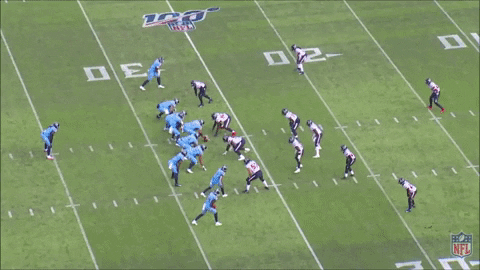
Below is a great example of Tannehill’s tendency to lock into a receiver and hold onto the ball. He’s not necessarily being fooled by the coverage or what he’s seeing, he sometimes just falls in love with the deep ball or the kill shot and ends up taking sacks because of it. You can see from the end zone view that he’s locked in on the deep routes to the left of the field and doesn’t come off it to see the out by his slot receiver #86. He tries to buy time and is eventually sacked.
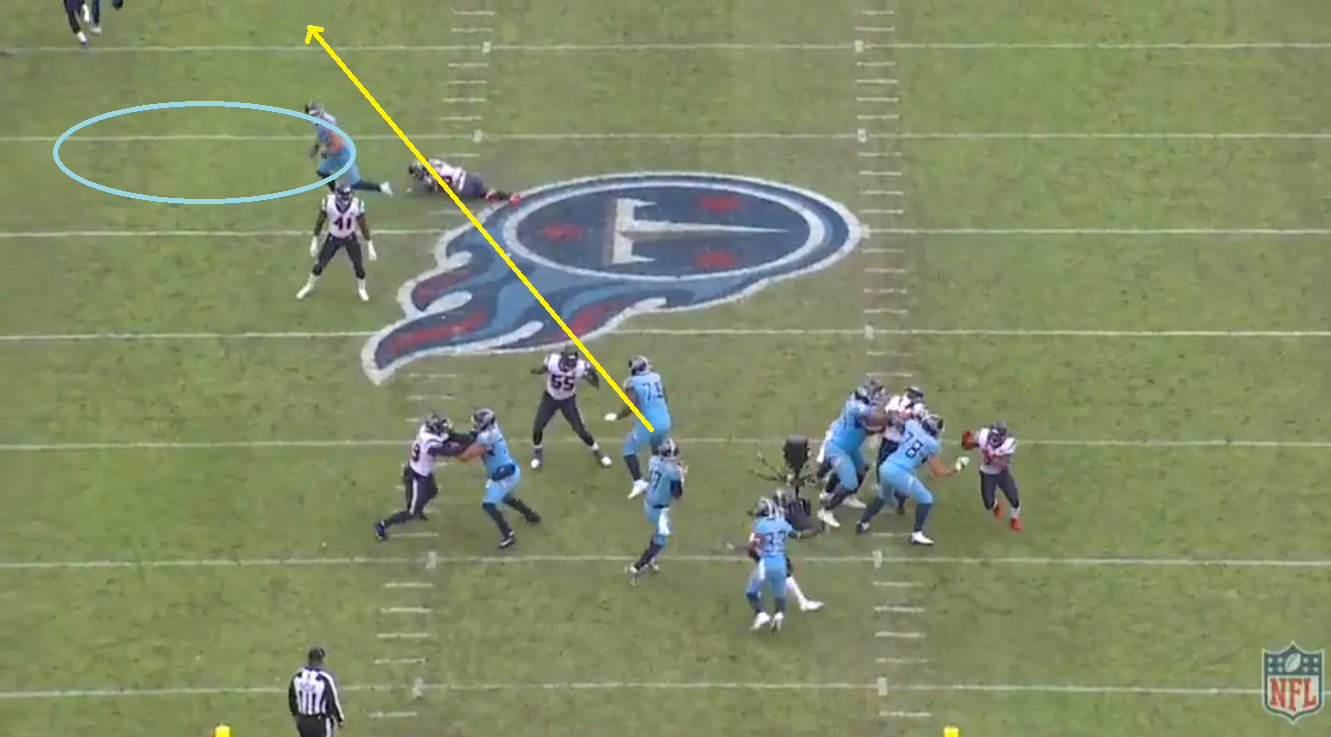
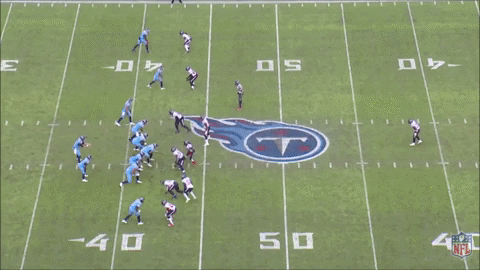
Here are a couple throws from the Patriots game where Tannehill is hitting his receivers right in the face. While the deep out might look routine, that’s not an easy throw from the far hash. Tannehill shows amazing accuracy pretty consistently and when your running back is going for 182 yards in a game, sometimes you only need to hit a few critical throws to win and that’s exactly what Tannehill did.
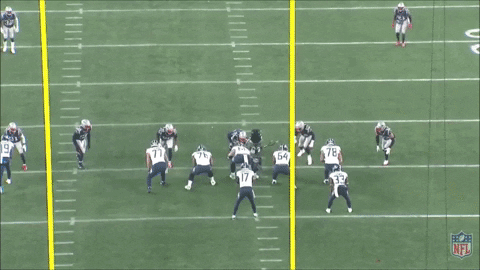

So can Tannehill do it alone? As long as the Titans set him up to. So far, I’m 75% in as far as trusting their offense and the concepts behind it. They really struggle to get the running back involved in the pass game and with Dion Lewis on your team you’d really hope to see more of that. All of the crossing routes on play-action fit Tannehill perfect and the occasional long bomb is right up his alley. If you ask him to progress through reads, though, he can end up taking some critical sacks. I’d qualify him as a middle to upper tier guy going forward with a huge ceiling as AJ Brown continues to develop and with another weapon or two on offense. He gives really good YACable balls which will only help his stats. With the balance they currently have between him, AJ Brown, and Derrick Henry, they will be incredibly difficult to shut down in the playoffs and I wouldn’t be at all surprised to see them upset the Ravens at home during the divisional round.
If you liked this post make sure to subscribe here and let us know what you think. If you feel like donating to help us keep things running, you can visit our Patreon page here. Make sure to follow us on Instagram @weekly_spiral and twitter @weeklyspiral for updates when we post and release our podcasts and blog. You can find the Weekly Spiral podcast on Spotify or anywhere you listen.
References
Baldwin, B. (2020, January 6). Further Research on Play-Action Passing. Retrieved from Football Outsiders: https://www.footballoutsiders.com/stat-analysis/2018/further-research-play-action-passing
Follow My Blog
Get new content delivered directly to your inbox.
